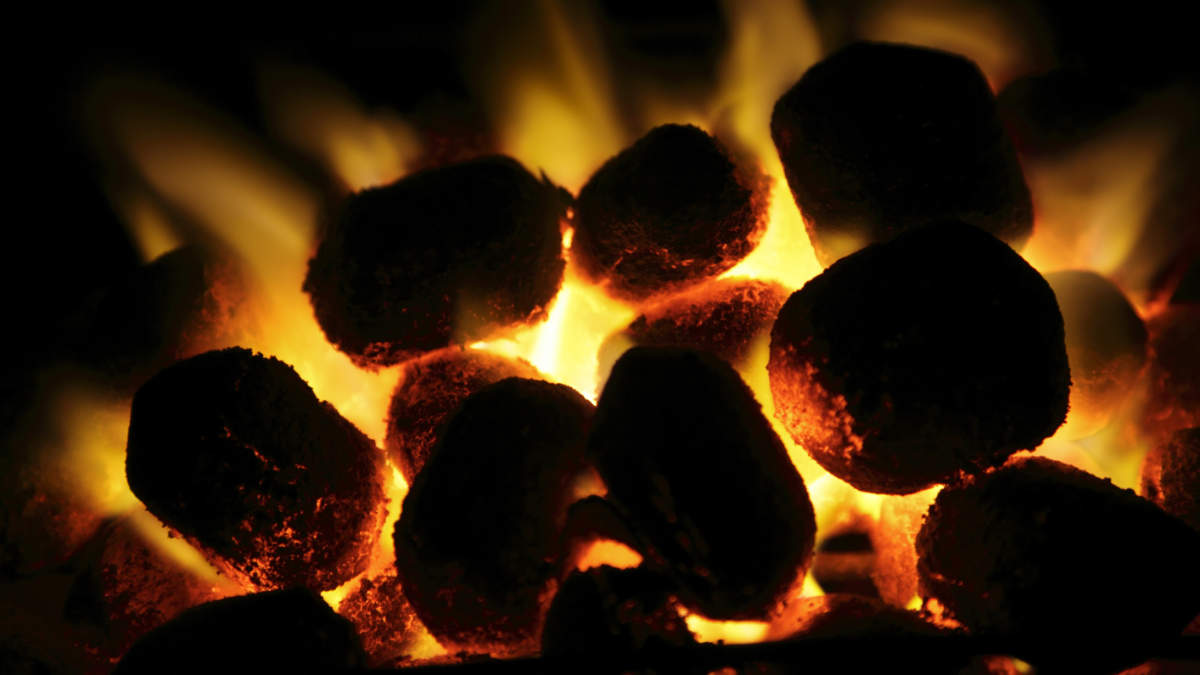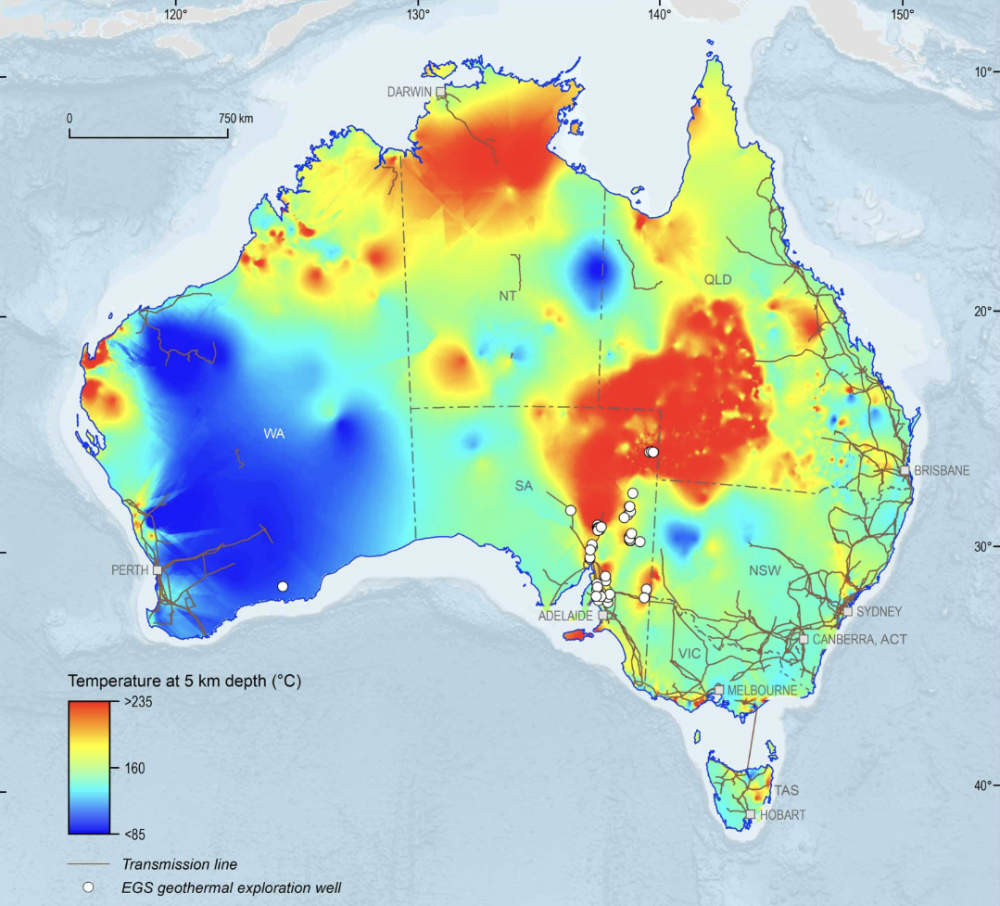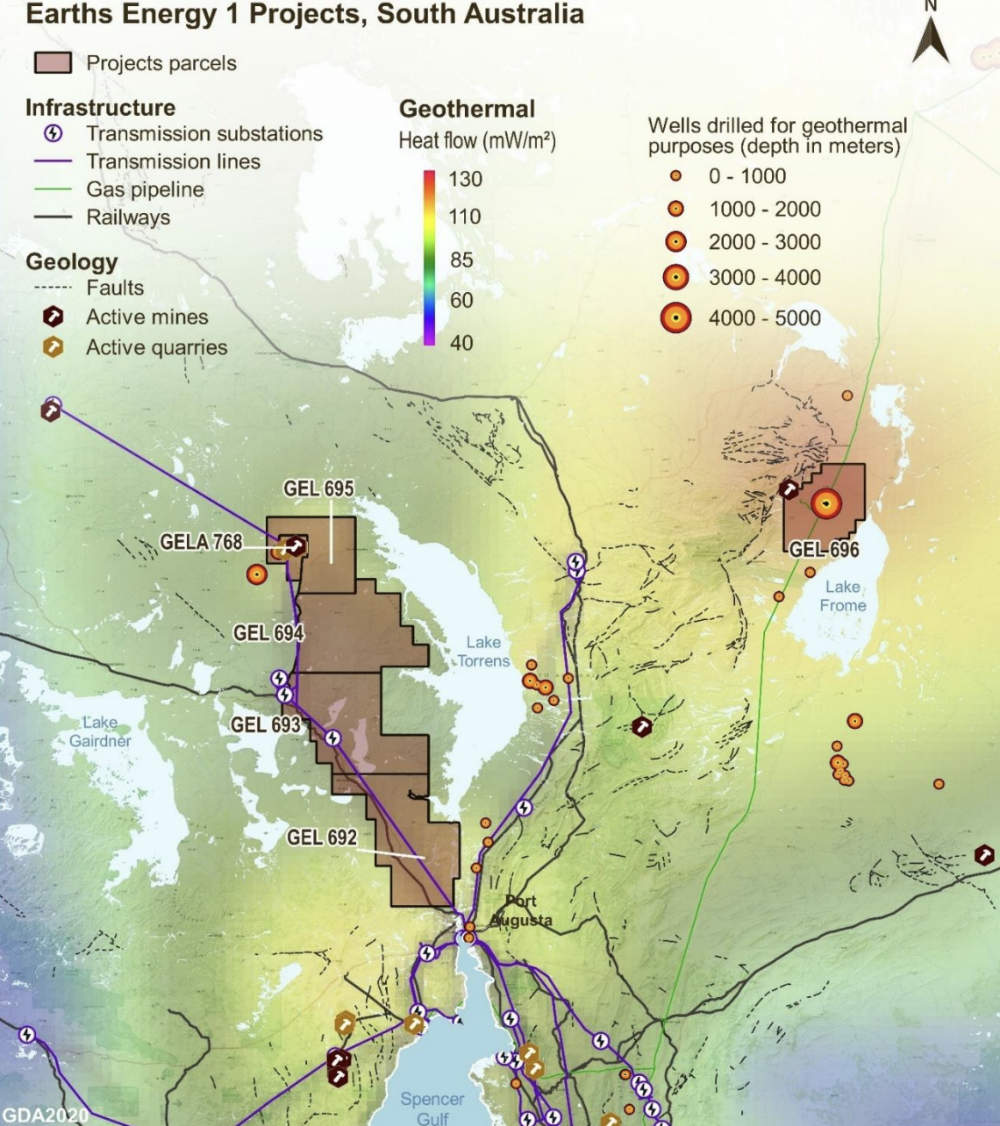Hot Rocks: Geothermal’s second wind could answer Australia’s energy needs

Geothermal energy is making a comeback in Australia. Pic: Getty Images
- Geothermal is capable of producing reliable, baseload renewable energy
- New technology has reduced the cost of drilling wells and accuracy of interpreting data
- New wave of geothermal players could help meet Australia’s green energy needs
There is little doubt that renewables are the key to a cleaner energy future but of the various types, only hydropower and geothermal are capable of producing consistent, baseload power.
Hydro is of course encumbered by being largely restricted to large-scale projects that bring with them exorbitant costs, not all of which are monetary. One need only look at the social and ecological impact of China’s Three Gorges Dam as an example.
Geothermal, by contrast, can be scaled from small projects all the way up to large, grid-scale systems capable of powering entire cities.
For a long time, the only drawback to geothermal was that it needed the right geology, typically a geologically active or formerly geologically active region, which essentially rules out most (if not all) of Australia.
That isn’t the only option though with underground hot rocks being a possible alternative. Previous attempts to use enhanced geothermal systems (EGS), which force a liquid – typically water – into the hot rocks ran afoul more than a decade ago in Australia because of high costs compounded by competition from cheap coal-fired electricity.
The geothermal renaissance
However, Earths Energy (ASX:EE1) chief executive officer Josh Puckridge believes that the stars have now aligned for a geothermal renaissance, not just in Australia but globally, thanks to a different paradigm brought about by changing markets and incentives.
Speaking to Stockhead, he noted that while power prices were still too low compared to other countries, power demand continued to climb as Australia decommissioned coal-fired power stations. This is occurring in parallel with the need to make our electricity generation green in order to meet net zero emission goals.
Puckridge pointed out the first factor that brought geothermal back into consideration was a drastic reduction in costs associated with drilling, and in particular horizontal drilling, thanks to companies like Fervo Energy applying in recent years both the technology and work ethic from the oil and gas sector to bring geothermal into the new age.
“It means that we can drill cheaper than was experienced 15 years ago, which means we can drill more and deeper and interact more with the reservoir,” he said.
Puckridge pointed out that when the company’s Paralana project was explored by previous owner Petratherm, it was only ever drilled vertically with no horizontal drilling.
“Horizontal drilling exposes more of the actual surface area of the hot rock to the well, increasing the amount of heat that can be extracted,” he explained.
“Secondly, in the last 15 years, our ability to map and model the subsurface is chalk and cheese in terms of the accuracy around our ability to interpret data and the resolution of seismic data used to model reservoirs and fractures.
“While some of the previous work done at Paralana built some compelling models that were excellent for the time, we can now pull those together with far greater accuracy while leveraging less invasive exploration techniques such as seismic.
“There’s also the holistic view of how lower cost and greater accuracy come together to refine the different styles of development.”
Costs deflating
Reflecting on how these have changed geothermal, which had previously being seen as having high start-up costs, Allasso Energy managing director Andrew Somoff said that the technology advances and increased scale of adoption had accelerated cost deflation similar to that experienced with other renewable technologies.
“In the last year we saw the LCOE (levelised cost of energy) of geothermal power decrease by 22%. This was more than any other renewable technology globally,” he noted.
Somoff added that the international focus on geothermal has moved from the traditional high temperature subsurface requirements (>200C) to the more accessible low-mid range (120-180C) that is readily available in parts of Australia.
“Recent projects have seen binary geothermal power plants in the USA being developed and coming online with up to 150MWe capacity and now we are seeing up to 400MWe projects being sanctioned,” he said.
“These developments are occurring in geothermal environments analogous to what we have in Australia, so it shows where we can go.”
Puckridge added that geothermal has scalability in its favour, more control over where it goes and a much lower environmental footprint.
Thanks to the use of horizontal wells, even a 100 megawatt geothermal plant will take up very little space in often out of the way places, meaning it will experience significantly less of the opposition from tourism and environmental groups faced by wind and solar.
Once defined, geothermal energy resources are also capable of producing nearly inexhaustible, reliable baseload energy.
Enhanced government focus
Geoscience Australia, which featured geothermal energy for the first time ever in the 2024 edition of its Australia’s Energy Commodity Resources (AECR) assessment, also confirmed the growing interest, noting the substantial increase in permit applications across the country.
Like Puckridge, Australia’s geoscience research agency noted that recent breakthroughs have the potential to significantly impact the future development of geothermal energy in Australia.
It added that while there’s currently no geothermal electricity generation and just over 36MW of installed capacity for direct use of geothermal heat from hot aquifers, these technological advances have the potential to create an EGS with much higher flow rates than have been achieved previously, which will in turn generate more power.
It added closed-loop advanced geothermal systems (AGS), which do not involve fluids penetrating into the rock from one well to another, also had much potential for electricity generation, though they are still very much in the early stages of development.

Further developments
Puckridge also noted that unlike volcanic hydrothermal systems, which already have hot fluids, the vast majority of Australia’s geothermal systems are hot, dry rock systems.
Whilst they are arguably more available and better in the long run from an operational point of view, there has been a larger engineering hurdle in being able to develop those projects reliably.
However, hot dry rocks also lend themselves to innovative developments.
“One of the things I’m interested in is instead of using water, there is the potential to use liquid CO2, which has a lot of advantages,” Puckridge said.
“That really lends itself to hot dry systems because when CO2 interacts under pressure with moisture, you get a carbonic acid build up and that’s obviously a bad thing.
“But here in Australia, you have huge tracts of stable heat anomalies that with an innovation like using liquid or supercritical CO2 – which becomes a gas at as low as 31 degrees Celsius as opposed to 100C for water – we can see the obvious solutions there for how we can see these innovations are well suited for bringing Australia back on line.”
Other areas that have seen improvements include the efficiency of energy conversion of geothermal resources into electricity, which directly affects the cost of installation or the size of the available resource base.
It could also reduce the minimum temperature required for effective power generation, which allow for the exploitation of shallower—and hence less expensive – heat sources.
Fingers in the geothermal pie
With this resurgence in geothermal interest, it is no surprise that a number of companies – both private and ASX-listed – have jumped into the fray.
Allasso Energy
Unlisted pure play Allasso Energy is focused on progressing the appraisal and commercialisation of its permits in the Pilbara, Ashburton and Gascoyne regions of WA, which collectively make it the largest geothermal acreage holder in the State.
It also has four geothermal exploration permit applications in the NT and has identified significant opportunities within Queensland.
The company seeks to deliver baseload renewable electricity to help industrial customers decarbonise their operations, with Somoff noting that the company saw existing demand of more than 1GW across the Ashburton and Pilbara regions.
“Allasso has engaged and is working with these industries to develop baseload offtake options as a key part of their decarbonisation solution. The ability to deliver large scale renewable baseload power with low environmental impact, is our goal and what we see the market requiring,” he told Stockhead.
“We have a strong team in place and we also continue to develop strategic partnerships with technology leaders.
“Some of our initial deliverability screening work was performed by Eavor Technologies, a Canadian leader in AGS and we are expanding those relationships further to include downstream providers of binary power systems and other technology partners.”
He added that the company’s strong well construction and deliverability team had an extensive track record of working with a disciplined cost focus, allowing it to develop cost efficient well designs through extensive local knowledge and incorporate innovation and advancements in technology to optimise deliverability.
Allasso has completed extensive geological and pre-front end engineering and design studies to aid in the development of work programs at its WA permits.
The work programs are designed to optimise the delivery of the right baseload requirement to the end users.
Earths Energy (ASX:EE1)
Earths Energy has interests in both Queensland and South Australia with the Paralana and Flinders West projects in SA being the real standouts.
Paralana, which sits 300km northeast of Port Augusta, has the distinction of being one of the most advanced EGS plays during the first wave of geothermal activity in Australia.
Originally targeted by PTR due to the known high heat production of the Mount Painter Inlier with the Paralana Hot Springs flowing water heated to 62C at surface, exploration proved that a high temperature gradient – essential for successful geothermal electricity generation – was present.
This previous work had measured bottom hole temperatures of 171C with a temperature gradient of 46C per km of depth, ~1.84x the Australian average.
However, the project was never completed due to a lack of funding and PTR shifted gears into mineral exploration.
Puckridge noted that since then, Paralana has not really been revisited in 13 years until Earths Energy came along.
“It is our job to see what innovation can be applied to our flagship project and a lot of it comes from being able to bring what Australia does well, which is great explorers, great geophysics” he added.
“Nothing has changed there, those rocks aren’t going to change. That tenement is still underexplored.”
Its Flinders West project, about 45km northwest of Port Augusta, has also seen previous work, with drilling reaching a depth of 1934m and encountering bottom hole temperatures of 85C along with a high gradient of 43C per km.
A recent review found that Paralana had the potential to produce between 97 and 233 gigawatt hours of power per annum based on conventional analogues in the US while Flinders West could have an upper range of power density of about 7MWe/km2, sufficient for commercial power generation.

Strike Energy (ASX:STX)
Strike Energy has been progressing its geothermal ambitions in the Perth Basin, though unlike EE1 its project looks to exploit non-gas bearing, water-wet sandstones.
While the Permian sandstones are typically targeted for their rich gas content in this region, they are also home to reservoirs of hot water that have the potential to be harnessed to create reliable, clean energy.
As such, the company has secured ~3500km2 of ground and is evaluating targets for a pilot program to test its potential.
Modelling of these hot sedimentary aquifers have indicated their potential to flow water at up to 175C, which could support up to 350 MW of power generation.
Whitebark Energy (ASX:WBE)
Whitebark Energy has three geothermal exploration permits that cover 9524km2 in the Cooper Basin, southwest Queensland, where offset well data have shown elevated geothermal gradients that are sufficient to power electrolysers that will crack water molecules into hydrogen and oxygen.
It is currently focused on conducting further comprehensive geological surveys and exploration activities to verify the potential of EPG2049 to generate power.
EPG2049 benefits from existing oil and gas production fields and well infrasturcture with the company planning to introduce technologies and reservoir characterisation techniques to optimise resource development and maximise energy extraction.
The company will also collaborate with government agencies, research institutions, and industry partners to accelerate geothermal exploration and development efforts.
Additionally, it will target further opportunities across inland Australian projects that support near term capital efficient geothermal deployment.
At Stockhead we tell it like it is. While Earths Energy is a Stockhead advertiser, it did not sponsor this article.
Related Topics
UNLOCK INSIGHTS
Discover the untold stories of emerging ASX stocks.
Daily news and expert analysis, it's free to subscribe.
By proceeding, you confirm you understand that we handle personal information in accordance with our Privacy Policy.








